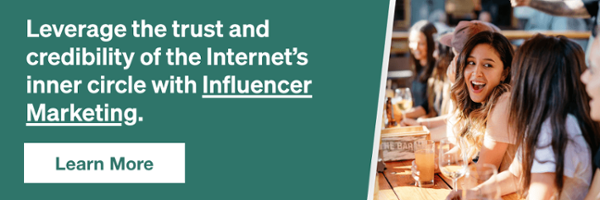How to Find Influencers

“Influencer Marketing” has quickly become one of the most prominent buzz words in the social media and marketing world. Platforms like Instagram and Youtube make it possible for brands to leverage the impact of influential people to bring more awareness to their campaign. When done right, influencer marketing can help promote a company’s message in front of thousands of potential customers and increase ROI tremendously.
While influencer marketing may not be for every business, it has the potential to be used in a variety of ways. Whether your a product based company or a non-profit on a mission, influencer marketing can help spread the word and create a social buzz around your brand.
Are All Influencers Equal?
In short, no. Influencer accounts come in all sizes, demographics, and niches. There are fashion influencers, health influencers, travel influencers, pet influencers, and so much more. In fact, the list continues to grow daily. Each influencer has a unique audience, reach, persona, and price. However, there are two main categories of Influencers that marketers refer to known as “Macro Influencers” and “Micro Influencers”. We’ve explained the differences between each, below:
Macro Influencers
A Macro influencer is an individual/account with a huge following and high engagement rate. Think the Kardashians, Beyonce, Professional athletes, etc. Each post that a Macro Influencer publishes is going to leave hundreds of thousands of impressions and be seen by thousands of consumers.
Micro Influencers
Micro influencers are individuals/accounts which have a smaller audience ( 2k – 30k followers) and smaller reach. While this may seem less desirable to some brands, many marketers have seen great success with these accounts because the audiences are more targeted and niche. Often, when working with a smaller influencer not only is communication easier, but you’re also able to gather more data around their audience.
Related: Why Your Brand Needs to Work With Micro Influencers
Where to Find Influencers?
Research Hashtags
Hashtags are a great tool when searching for influencers within a specific niche. By simply searching Instagram results for a hashtag that relates to your brand (Ex. #glutenfree), you will be provided with the top posts for that hashtag. Because these top posts are the ones with the most likes, they are often posts from influencers who have a large following related to that niche. From there you can pick and choose which influencers you might be interested in collaborating with.
Find Out Who’s Influencing the Influencers
Influencers who post together, stick together. Chances are an influencer’s “following” list will be full of like-minded influencers who inspire and encourage them. Once you find an influencer who fits your brand, check who their following, and you’re sure to find some more!
Find Out Who Your Followers are Following
Just like influencers, your brand’s followers will follow people who inspire them. Searching through some of the accounts your audience follows is an excellent way to gauge what and who they’re interested in. This method will allow you to find both micro and macro influencers who fit your target market and would be a great marketing pair.
Use Tools
Many companies offer tools that help brands find influencers. These tools make it extremely easy to search an influencer based on niche, price, location, etc. While some sites do require users to pay a monthly fee, using an influencer database can save a lot of valuable time and money! It is also a more stress-free way to reach out to influencers as the platform handles the majority of the communication.
Related: Why All Social Media Influencers Aren’t Influential
What to Consider When Choosing an Influencer
Now that you’ve compiled a list of potential Influencers, how do you choose which one to partner with?
Here are a few factors to consider when finding the perfect influencer:
Content Relevance
When choosing an influencer, looking at the content they’ve created, and determining if it will resonate with your target audience is the first step in deciding whether or not it is a good investment. Influencers who share content that falls within your niche and would look great on your channels is an ideal collaboration. Determining this beforehand will ensure that the content you receive will resonate with your audience.
Post Frequency and Engagement
Post frequency plays a huge part in whether or not an influencer’s audience is engaged. If an influencer has a large following on social media, remains active, and actively responds to their follower’s comments, chances are that they dedicated to their account and will be easier to work with. The amount of engagement an influencer receives gives you an insight into how active their following is. Comments are also useful when determining whether an influencer connects with their audience.
Audience Data
Getting the details of an influencer’s audience beforehand can save you a lot of work upfront. Audience data is crucial when it comes to predicting how effective an influencer campaign will be and if your product will resonate with their audience. Aside from Instagram audience data, the data can also include page views, website traffic, etc.
Related: How to Develop an Influencer Outreach Strategy That Converts
Content Quality and Style
Think of an influencer as an extension of your brand. Are they putting out the vibes you want to send, attracting the people you’d like to convert, and producing content that fits your brand guidelines? Quality is so much more than just picture clarity. When checking the quality of an influencer’s content, spelling, grammar, and tone are all things to look for.
Our Editorial Standards
Reviewed for Accuracy
Every piece is fact-checked for precision.
Up-to-Date Research
We reflect the latest trends and insights.
Credible References
Backed by trusted industry sources.
Actionable & Insight-Driven
Strategic takeaways for real results.







